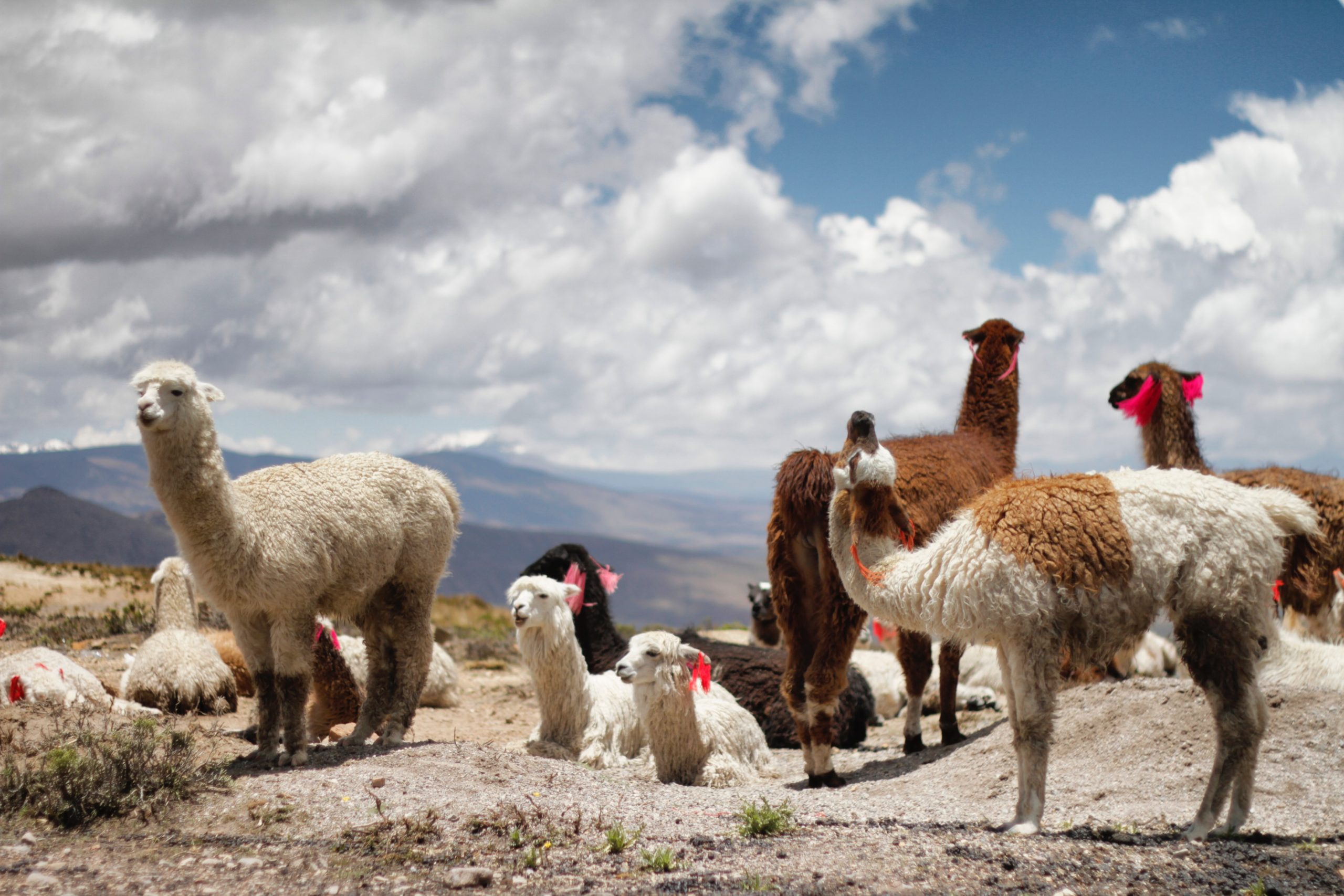Written by Veronica Kassatly
I am grateful for the help of Jaanus Vosu (perualpaca2010@gmail.com), Walter Antezana, and Mauricio Nunez Oporto.

After silk, alpaca is the second most vilified fiber in the sustainable apparel industry. Alpacas are camelids — long-necked herbivores that thrive in dry and hostile environments. Not surprisingly, as with sheep for the Navajo, and silkworms in India and China, the wonder of a creature that can turn inedible vegetation, often in an inhospitable landscape, into food and clothing, has endowed alpacas with mystical status amongst the indigenous peoples of the Andes. The Alpaqueros – alpaca farmers – of the Andes “don’t divide man and animals, our animals also have feelings“. To them, alpacas are children, siblings, parents, and to them, we are the guilty party: “the western world taught us to separate the elements of nature, when it is a matter of seeing the ecosystem as a unified whole“.
In a series of 3 articles, we examine the history and significance of alpaca farming in Peru and unravel the truth about who benefits from characterizing alpaca farming as environmentally harmful.
Part 1: Alpaca – More Prized Than Gold by the Incas, Still Scorned by the West?

In Part 1, we take a close look at what alpaca are, why they are so well-suited to the Peruvian altiplano, where sustenance is scarce and the indigenous inhabitants have few options, and we price check alpaca against other fibers – it’s expensive. As discussed in my previous articles on silk, this means that there is an economic incentive for brands and their funded initiatives to portray alpaca as environmentally harmful. Do they? And if so, is it justified?
Part 2: Fibs, Lies, and Falsehood
In Part 2, we examine how alpaca fiber ranks in terms of environmental impact using the Higg Materials Sustainability Index (MSI) and the Kering Environmental Profit & Loss (EP&L) account. We look at the shortcomings of these measurement tools in assessing alpacas’ cultural, social, and economic value to indigenous peoples. Finally, we dig into the competing interests in the mining industry for land use in Peru.
Part 3: When PETA Strikes, Certifications Follow
In the third and final article, we take a closer look at the claims for alpaca made by the ‘sustainable’ apparel sector. I walk through how these claims prioritize a global north perspective that diminishes the most disadvantaged, those in the global south who are producing the fiber. We conclude with an understanding of how the claims of ‘environmental harm’ are contributing actual harm to the livelihoods of small-scale alpaca farmers.


